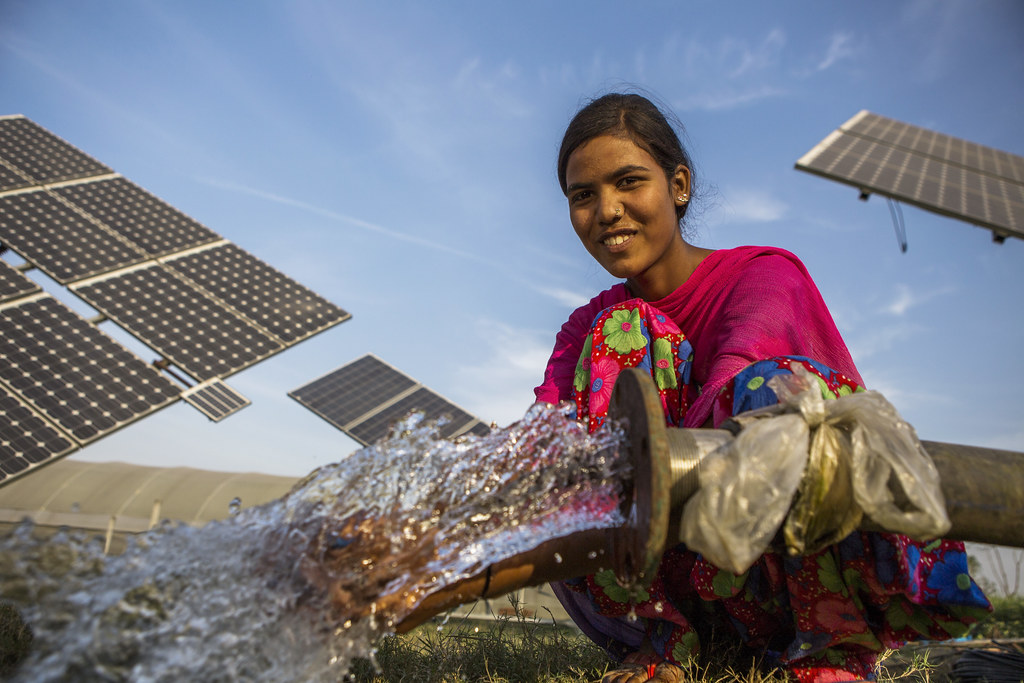Following the ambitious targets of the Paris Agreement and COP26 in Glasgow, a new advanced technology framework to help tackle climate issues needs to be more developed. The Glasgow Climate Pact emphasizes the urgency of scaling up action and support, including finance, capacity-building, and technology transfer to enhance adaptive capacity, strengthen resilience and reduce vulnerability to climate change events.
Abdulla Shahid, President of the United Nations (UN) General Assembly, expressed that the Fourth Industrial Revolution (4IR) technologies played a significant role in cutting world emissions. Fostering innovative climate technology is proven to be one of the keys to slowing the impacts of climate change, especially in the Southeast Asia region. Innovative climate technologies are critical for global response; hence, they need to be deployed as an integral part of each ASEAN Member States (AMS) climate plan.
As one of the most advanced technologies, 4IR technologies have become a pivotal part of future sustainability. According to the World Economic Forum (WEF), 4IR as the digital revolution is defined by a convergence of technology that blurs the distinctions between the physical, digital, and biological realms. Artificial Intelligence (AI), IoT, big data, augmented and virtual reality, and 3D and 4D printing are becoming essential and familiar elements in today’s human activities.
Climate change mitigation efforts require the utilisation of new and emerging technologies. The 4IR technologies can accelerate ASEAN’s actions to support the global net-zero emissions target by 2050. For instance, advanced 3D printing helps reduce carbon emissions in industrial manufacturing by facilitating localised production, reducing the need to transport.
In addition, the roles of AI technologies can improve energy efficiency by incorporating data from smart meters to estimate the energy demand. AI technologies also help utilities to optimise energy production. Furthermore, 5G-based smart grids can connect to numerous data points across long distances, ranging from wind turbines to rooftop solar panels and electric vehicle (EV) batteries.
These technologies have promising potentials to be the main tools for the region’s sustainability and resilience since they will provide opportunities to mitigate climate issues and realise future low-carbon development.
Opportunities
Based on a report by the WEF and Asian Development Bank in 2017, the region is particularly vulnerable to the impact of climate change considering its dependence on agriculture, and its heavily populated coastlines. However, the region can significantly contribute to climate change mitigation. For instance, the adoption of blockchain technologies allows cost-effective and transparent carbon emissions tracking as well as carbon market establishment.
In addition, the region has opportunities for leapfrogging to localise renewable energy production, which would lower the need for expensive power distribution network investment. Such opportunities also appear to monitor forestry activities more effectively to prevent human-induced degradation by the use of AI, drones and remote sensing.
According to the report, the integration of 4IR technologies to support clean energy is by including renewable energy generation associated with energy efficiency measures. One of the opportunities is to create renewable and decentralised energy generation, for instance, rooftop solar, city heat networks and peer-to-peer energy systems.
What’s Next?
Seeing the many opportunities in adopting 4IR technology for climate change mitigation in ASEAN, strategic planning and responsible technology policies and regulations need to be implemented by climate change stakeholders. The making of the strategy can be adjusted based on the strengths and weaknesses of each country to ensure that the planning strategy that will be developed is suitable to achieve the world target of carbon “net-zero”.
To implement secure 4IR technology, the government needs to establish transparent policies to set clear parameters for technology innovators and ensure the use of 4IR technology to monitor natural resources and combat climate change.
Recently, Malaysia has implemented a National 4IR policy to leverage the synergies of their physical, biological, and digital worlds to increase the nation’s overall value. The policy thrusts are as follows: to equip Malaysians with 4IR knowledge and skillsets; to forge a connected nation through digital infrastructure development; to future proof regulations to be agile with technological changes and accelerate 4IR technology innovation and adoption.
Therefore, to leverage advances in 4IR technology and build on existing initiatives across the region, ASEAN has offered a strategic framework for tackling climate change, namely the Consolidation Strategy in 4IR, which aims to provide policy guidelines in building the ASEAN Digital Community in all three ASEAN Pillars: ASEAN Political-Security Community (APSC), ASEAN Economy Society (AEC), and ASEAN Socio-Cultural Community (ASSC).
This strategy seeks to build a digital ASEAN open, secure, transparent, and connected that leverages technology to build resilience and a globally competitive economy that embraces innovation in transforming societies and contributes to social progress and sustainable development.
The views expressed in this article are the author’s own and do not necessarily reflect those of The ASEAN Post.



